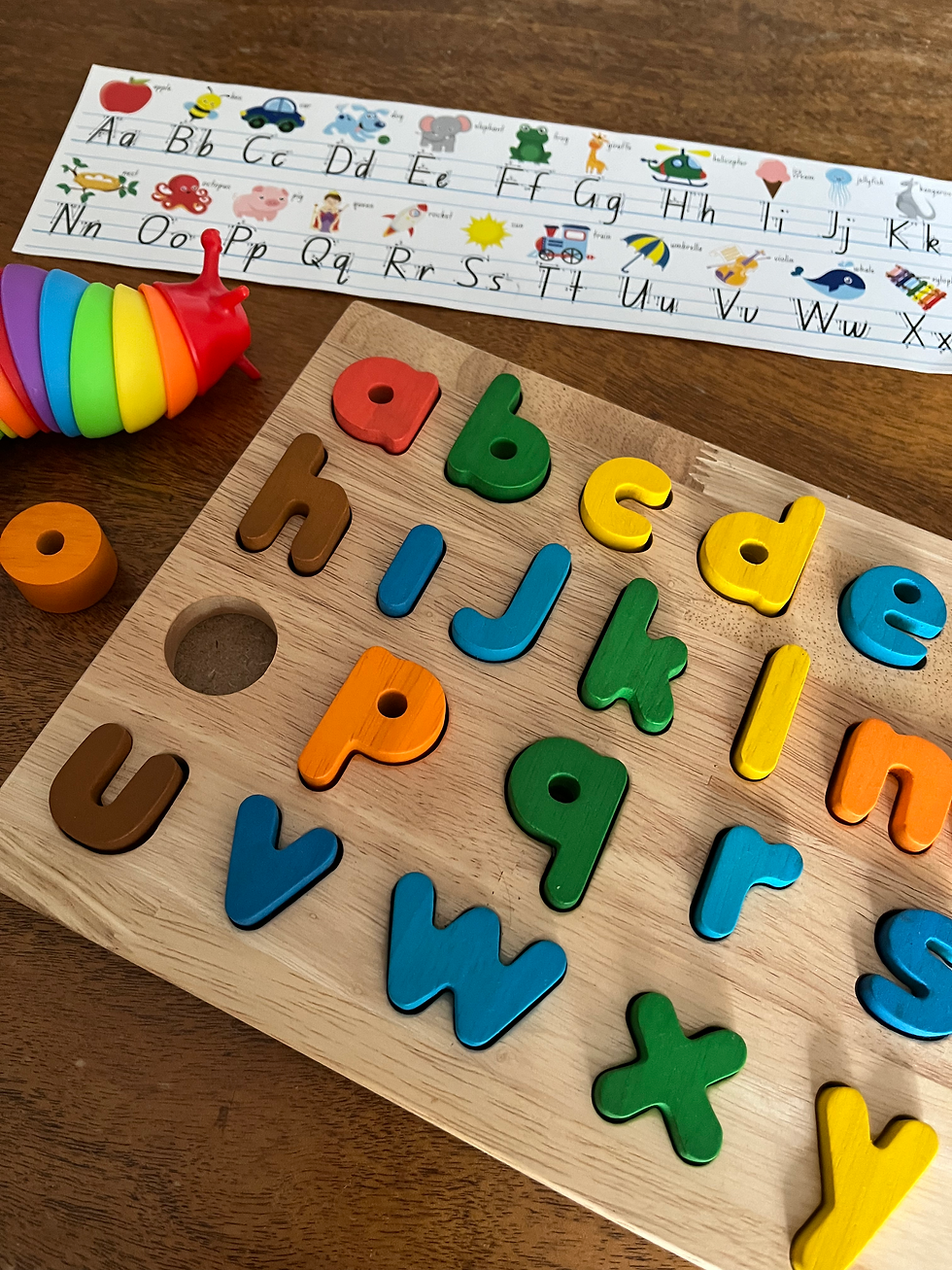Elements of our Literacy Program + Tips for Developing Literacy Skills
- Deanne Henderson
- Feb 6
- 4 min read
In order for an individual to learn to read and write, there are many elements that need to come together. Without any one of these, reading will prove challenging and even impossible.
When they do all come together, an individual can read fluently with comprehension as well as write with ease and confidence.
The primary goal of tutoring with Word Play is to ensure that all of the aspects are working together to enable our students to read, read well and even come to enjoy reading. This applies to writing as well. Engagement and enjoyment are at the forefront of lesson design.

In order to read, one must first understand what words mean.
Vocabulary. They must have a good vocabulary base to build from. There is no point being able to read a word or sentence if one doesn’t understand what it’s saying.
Tip: Build your child’s vocabulary by listening to audiobooks, pointing out new names of things as you come across them in day to day life and refraining from dumbing down your language when you speak with your child. Use the bigger words when you can.
Phonological awareness refers to the awareness of and ability to work with sounds in spoken language. The ability to hear and create rhyme, hear individual words in a sentence, clap out syllables are all a part of this skill set. Being able to manipulate sounds is a subset of phonological awareness and is called Phonemic Awareness. This helps to understand the way that words are put together.
Phonological Awareness is all done orally/aurally through saying nursery rhymes, tongue twisters and activities like matching the pictures for words that start with the same sound to start with. Phonemic awareness involves sound manipulation activities such as replacing the ‘m’ in mat with a ‘c’ to make a new word.
Letter-sound correspondence. This is knowing the sounds that letters and letter combinations make, for example, when we see the letter ‘a’, it generally makes the sound /a/ as in cat. When we see ‘igh’ together, they make the sound of the long ‘i’.
Tip: Rather than using the name of the letter, using its most common sound.
Decoding is the ability to read words written on the page. In literacy instruction, we often use decoding to refer to the sounding out of words written on the page. In order to decode, a student must have phonological awareness skills as well as knowledge of letter-sound correspondence.
Comprehension occurs when we combine all of those skills to decode the words on the page along with the understanding of what the words mean.
Comprehension occurs when we read fluently, that is with accuracy and speed. Sight words can be taught in order to speed up reading for greater fluency and therefore, greater comprehension as reading too slowly will reduce reading comprehension.
Tip: Model fluent reading to your child, including pointing out why you are doing what you’re doing, such as pausing at a full stop, speaking with gusto when there’s an exclamation mark and taking a breath between paragraphs on the page.
Encoding is the process of breaking down a spoken word into its sounds, or phonemes, and then matching those sounds to letters to spell the word. We teach encoding/spelling as we’re teaching the reading of those same words to show the relationship between reading and spelling.
Tip: When reading with your child, point out the spelling of some words so they can see what the word looks like. Seeing the word repeatedly can help with the spelling of it later on.
Handwriting is the skill of writing letters, words and sentences legibly so that they may be read. It requires fine motor skills and can be developed through gross motor, fine motor and strengthening exercises as well as learning how to form each letter correctly. Starting with large letters enables the students to grasp the correct formation, gradually reducing the size.
Tip: use putty, fine motor activities and large scale letters to build this skill before attempting small lettering which may prove too challenging at first.
Writing, like reading, occurs when multiple skills come together. The ability to use words to say something is the essence of writing. Knowledge of vocabulary, how sentences come together (grammar), punctuation, handwriting and spelling are all used to write. It is a highly complex skill and one which can prove frustrating for children who find any of these skills challenging. Patience and reasonable expectations are required when working with students on this skill.
Tip: I always remind students that the most important part of writing is having something to say. People do write books by recording themselves speaking and having that transcribed into written text. You can be a writer without perfect handwriting or punctuation if you have something to say.
Focus on enabling your child to get their message across, rather than writing with perfect handwriting and punctuation will go a long way to helping them grow in confidence with their writing.
Something I’ve seen many times before is children freezing out of fear when it comes to writing because they’re afraid of making mistakes. You don’t need to correct every mistake. We’ve all seen those writing samples that have been marked by a teacher and covered in red pen for each error made. For a child who is struggling, this may be demotivating and will only cause further fear of writing.
Focus on one skill for their writing at a time and correct that mistake if need be. For example, if you’re working on remembering a capital letter at the start of the sentence, remind them before writing each sentence and ask them at the end, did you remember to start with a capital letter? No? How can we fix it? You can also ask them to check their work themselves, reminding them of the skill they are working on at the time.
When a broad vocabulary, the ability to decode, read fluently and comprehend along with the ability to encode/spell words, write legibly, knowledge of punctuation and grammar come together, your child will be well on their way to reading and writing success and confidence.



Comments